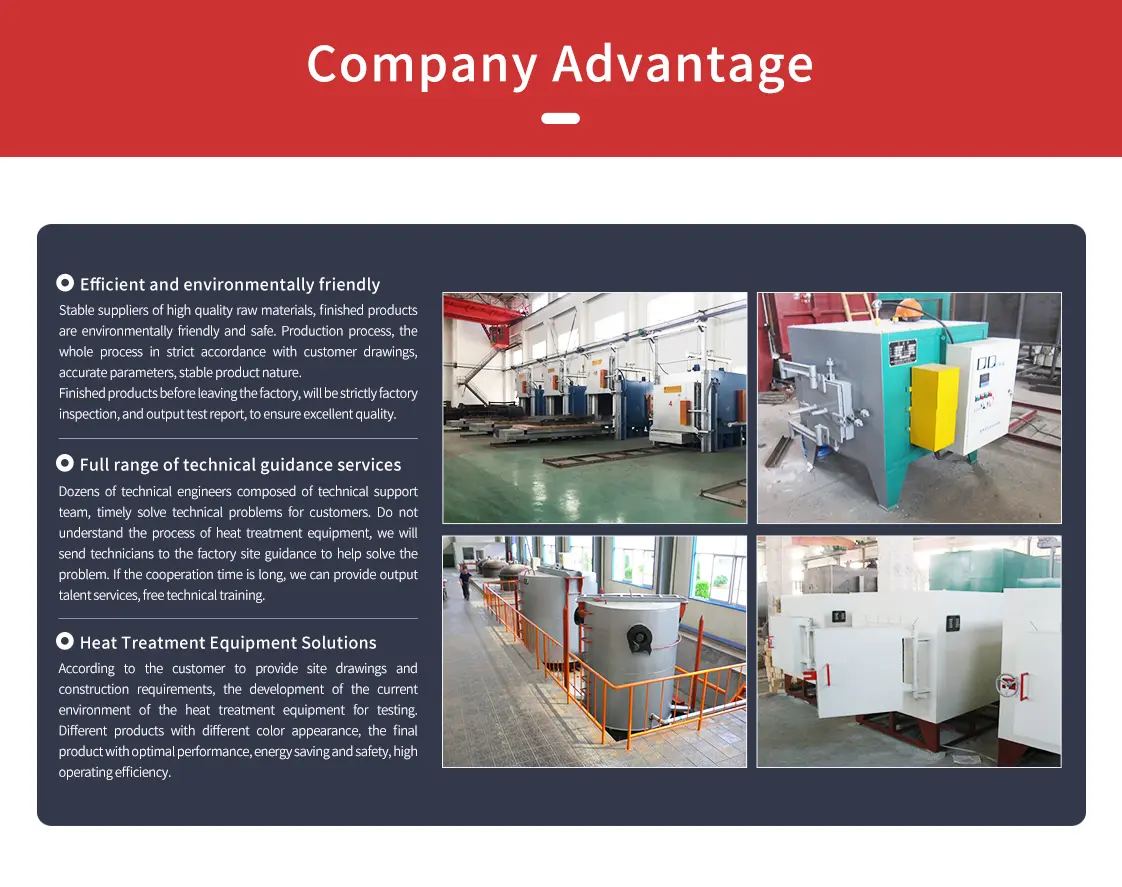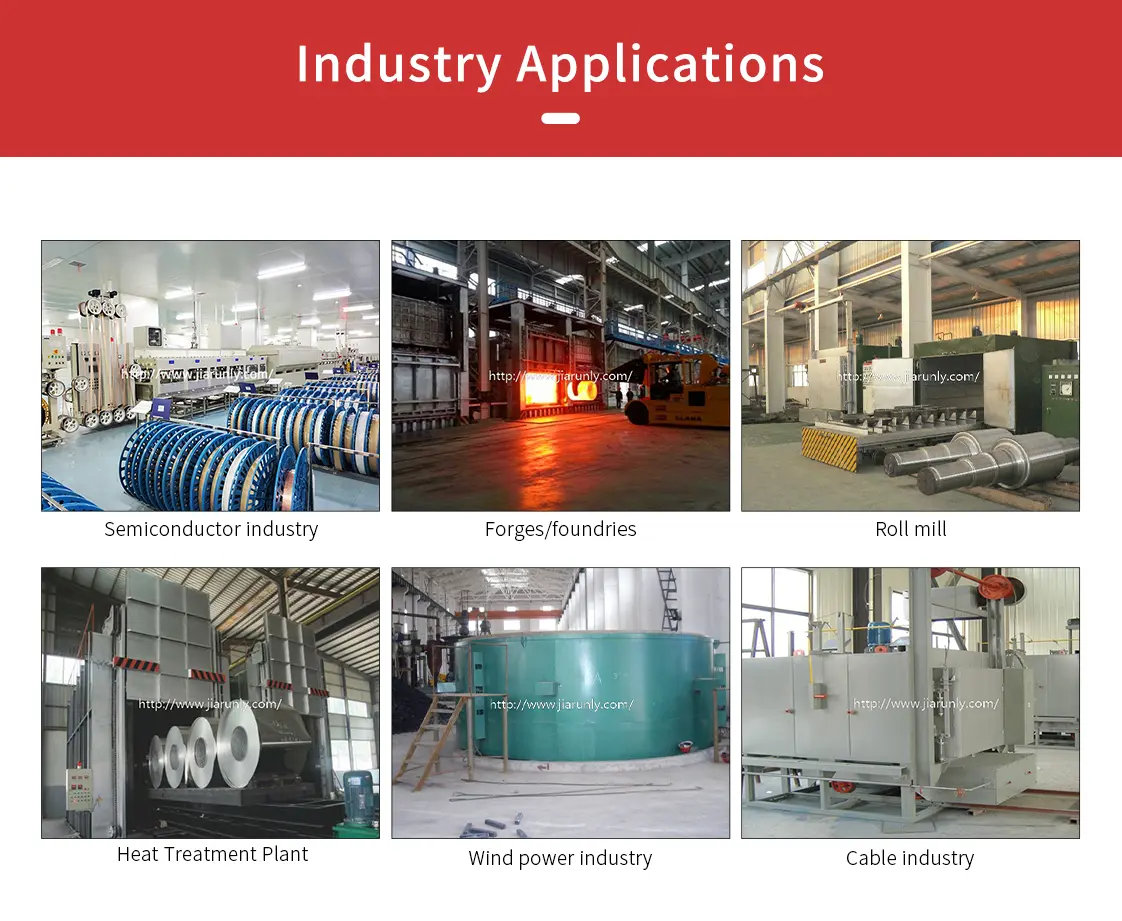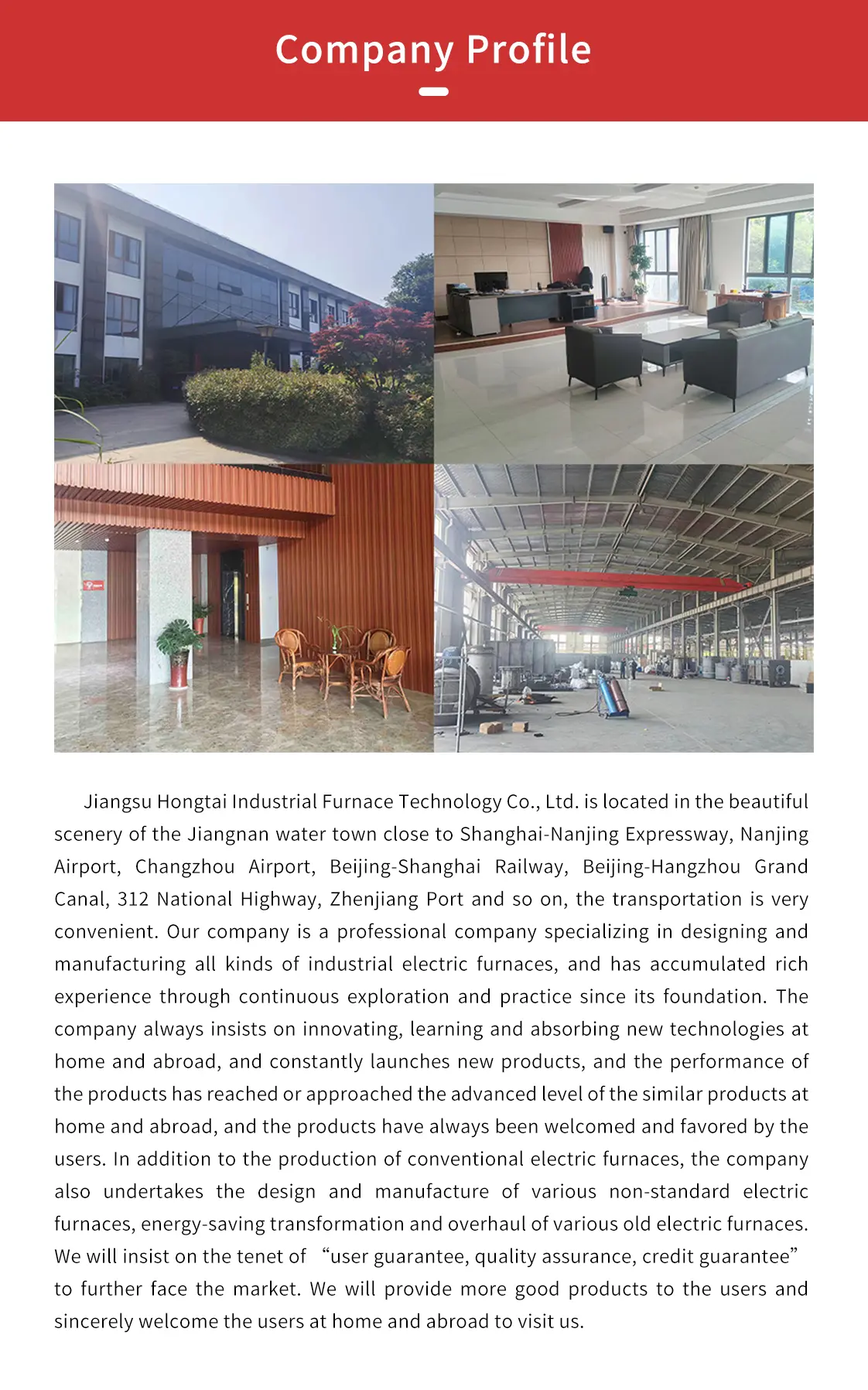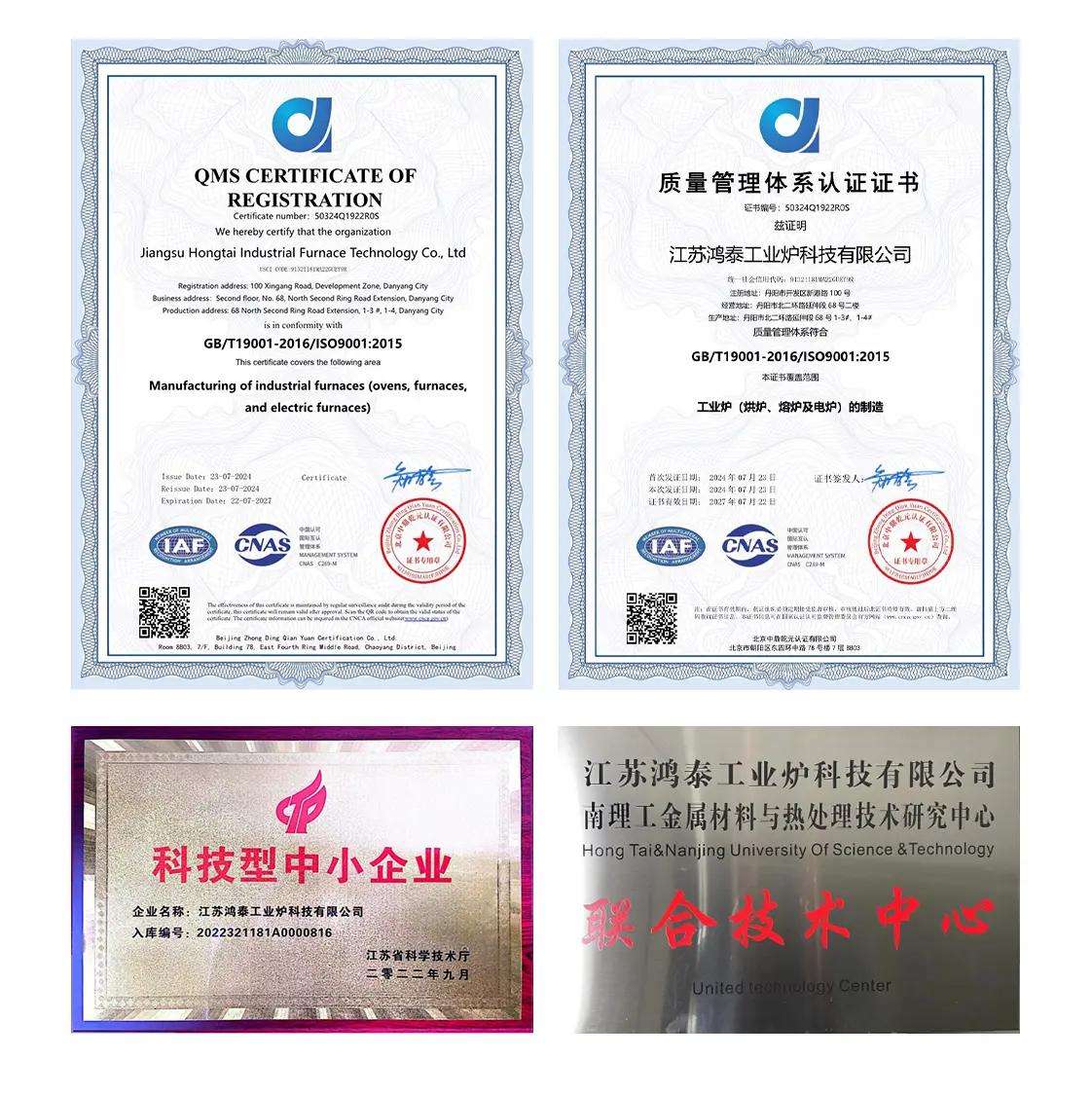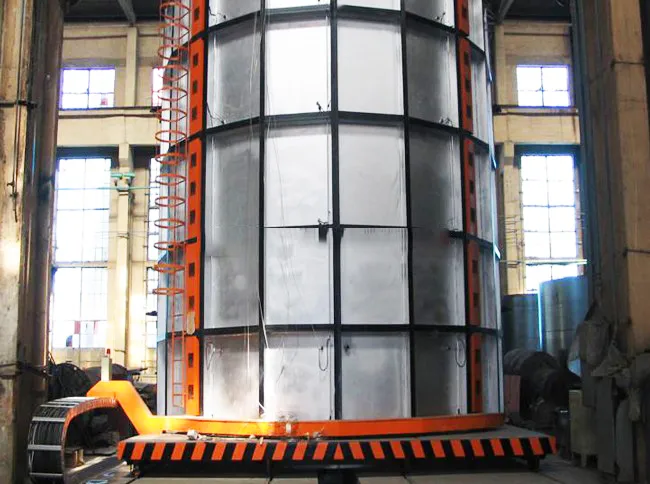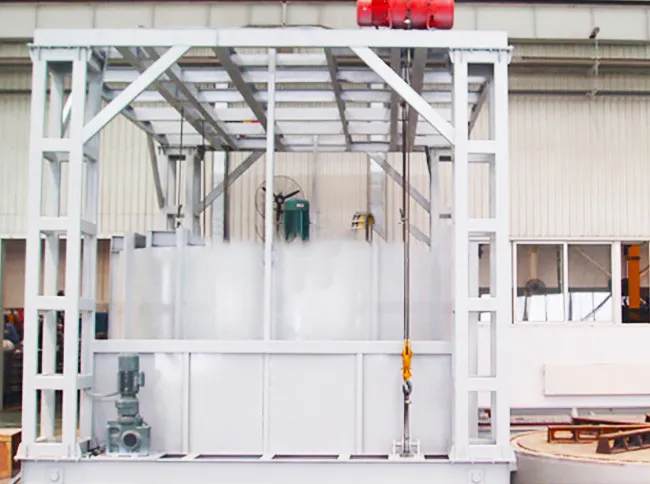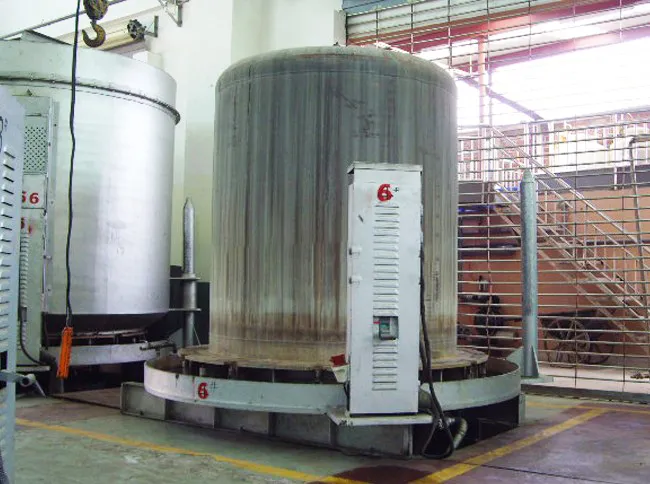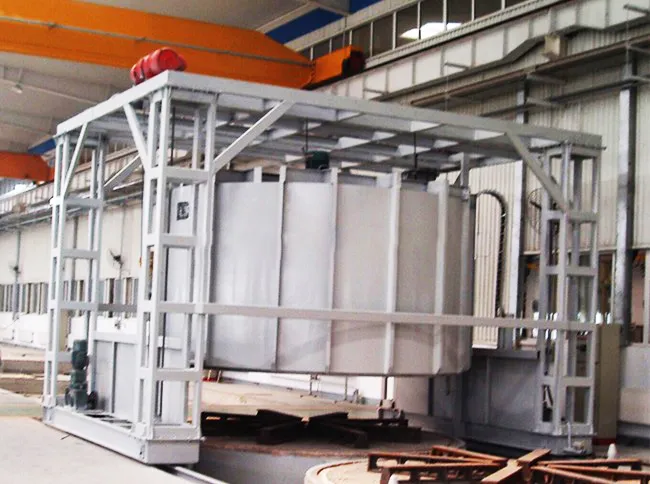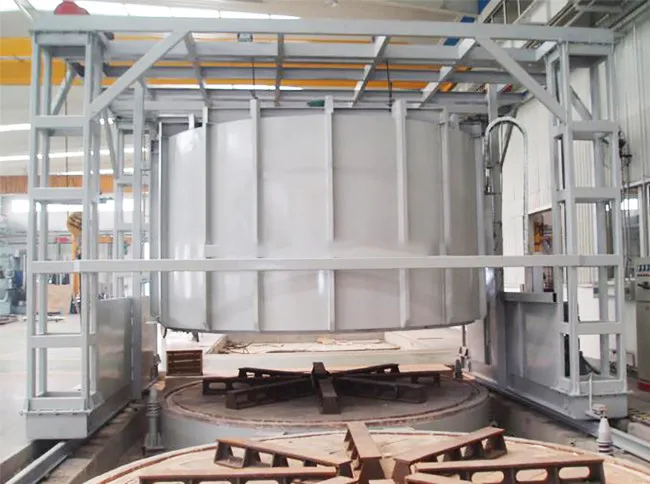- Vacuum furnace & oven
- Annealing Furnace & Oven
- Tempering furnace & oven
-
Carburizing furnace & Ovens
-
Bell Type Furnace
-
Pit Type Furnace & Well Type Furnace
-
Box Furnace & Chamber Furnace
-
Car Bottom Furnace & Bogie Hearth Furnace
-
Nitriding furnace & Ovens
-
Melting furnace & Ovens
- Quenching furnace & Ovens
-
Rapid quenching furnace & Ovens
- Forging furnace & Ovens
- Bright heat treatment furnace & Ovens
Hooded Tempering Furnace & Ovens
Heat treatment furnace manufacturer,Jiangsu Hongtai Industrial Furnace Technology Co., Ltd
Shroud type tempering furnace adopts all-fiber furnace structure, with excellent energy-saving performance, 30% energy saving than the same specifications of the brick resistance furnace, warming speed increased by 1 times.
Hooded Tempering Furnace & Ovens
Precision Tempering Solutions for Enhanced Material Toughness and Ductility
Product Introduction
Our Hooded Tempering Furnaces & Ovens are advanced heat treatment systems designed for the precise tempering of metal components after hardening or quenching. Tempering is a crucial heat treatment process that reduces the brittleness of hardened steel, increases its toughness and ductility, and relieves internal stresses, while still maintaining sufficient hardness. The hooded design, often combined with forced air circulation, ensures excellent temperature uniformity throughout the workload, which is critical for achieving consistent and predictable material properties. These furnaces are ideal for a wide range of applications in industries such as automotive, aerospace, tool manufacturing, and general machinery, where specific combinations of hardness, toughness, and ductility are required.
Core Advantages for Optimal Material Properties
- Precise Temperature Control: Advanced control systems ensure accurate and stable temperature profiles, critical for achieving desired hardness, toughness, and ductility.
- Excellent Temperature Uniformity: Hooded design with forced air circulation guarantees uniform heat distribution throughout the load, preventing hot or cold spots and ensuring consistent results.
- Enhanced Toughness & Ductility: Effectively reduces brittleness of hardened components, improving their resistance to impact and fracture.
- Stress Relieving: Relieves internal stresses induced during hardening or machining, preventing cracking and improving dimensional stability.
- Versatile Application: Suitable for tempering a wide range of steel alloys and other metals, accommodating various component sizes and geometries.
- Energy Efficient: Optimized insulation and heating elements minimize energy consumption, reducing operational costs.
- Automated & Safe Operation: Integrated PLC control with comprehensive safety interlocks, real-time monitoring, and data logging for reliable and secure operation.
Technical Specifications
| Parameter | Unit | Range/Value | Notes |
|---|---|---|---|
| Maximum Working Temperature | °C | 150 - 750 | Typical tempering temperature range |
| Heating Method | - | Electric, Gas-fired | Selectable based on energy source availability |
| Atmosphere Control | - | Air, Inert Gas (N2, Ar) | For bright tempering or to prevent oxidation |
| Rated Power/Fuel Consumption | KW / m³/h | Varies | Efficient heating systems |
| Working Chamber (W×H×L) | mm | Customizable | Available in various sizes and configurations |
| Temperature Uniformity | °C | ±3 (typical) | Ensures consistent tempering results |
| Control Accuracy | °C | ±1 | Advanced PID control |
| Circulation Method | - | Forced Air Circulation | Ensures excellent temperature uniformity |
| Control System | - | PLC + Touchscreen HMI | Advanced automation and data logging |
| Safety Features | - | Over-temperature protection, Door interlocks, Emergency shutdown | Ensures safe operation |
Working Principle
Tempering is a heat treatment process applied to ferrous alloys, most commonly steel, after they have been hardened by quenching. The primary purpose of tempering is to reduce the brittleness of the hardened material, increase its toughness and ductility, and relieve internal stresses, while still retaining a significant portion of the hardness achieved during quenching. This is achieved by heating the material to a temperature below its lower critical temperature (typically between 150°C and 750°C) and holding it at that temperature for a specific duration, followed by controlled cooling.
Hooded tempering furnaces are designed to provide excellent temperature uniformity, which is crucial for consistent tempering results. The hooded design typically incorporates powerful forced air circulation fans that ensure hot air is evenly distributed throughout the working chamber and around the workload. This convective heat transfer mechanism is highly effective for achieving precise and uniform temperature profiles, which is essential for preventing localized overheating or under-tempering.
During the tempering process, the unstable martensitic structure formed during quenching transforms into a more stable and tougher microstructure, such as tempered martensite or bainite, depending on the tempering temperature and time. The specific temperature and duration of tempering are carefully selected based on the desired final properties of the material. Higher tempering temperatures generally result in lower hardness but increased toughness and ductility. The furnaces are equipped with advanced PID controllers to maintain the set temperature with high accuracy, ensuring repeatable and high-quality tempering results for a wide range of applications.
Process Flow
Loading Hardened Components
Components that have undergone hardening or quenching are loaded into the tempering furnace.
Heating to Tempering Temperature
Furnace heats components to the precise tempering temperature, ensuring uniform heat distribution.
Soaking Period
Components are held at the tempering temperature for a specified duration to allow microstructural transformation and stress relief.
Controlled Cooling & Unloading
Components are cooled in a controlled manner (often in air) and then unloaded for further processing.
Solving Customer Pain Points
Reducing Brittleness of Hardened Parts
Our tempering furnaces effectively reduce the inherent brittleness of hardened steel, transforming it into a tougher and more ductile material, crucial for impact resistance and reliability.
Achieving Specific Hardness-Toughness Balance
Precise temperature control allows for fine-tuning of mechanical properties, enabling manufacturers to achieve the exact hardness-toughness balance required for their specific applications.
Minimizing Internal Stresses & Distortion
The tempering process effectively relieves internal stresses induced during hardening, preventing cracking, warping, and improving the dimensional stability of components.
Ensuring Uniform Properties Across Large Loads
Forced air circulation and excellent temperature uniformity ensure that all components within the load are tempered consistently, leading to uniform mechanical properties and reduced rejects.
Optimizing Energy Consumption
With efficient insulation and heating systems, our furnaces minimize energy usage during the tempering cycle, contributing to lower operational costs and environmental sustainability.
Process Repeatability & Quality Assurance
Advanced PLC control and data logging capabilities ensure consistent and repeatable tempering results, meeting stringent quality standards for critical components.
Customer Success Stories
A manufacturer of automotive engine components reported a 15% increase in the fatigue life of their crankshafts after implementing our hooded tempering furnace, attributing the improvement to superior toughness and stress relief.
Customized Services
We offer comprehensive customization services for our hooded tempering furnaces, including tailored chamber dimensions, specific heating methods (electric or gas), and integration with existing heat treatment lines. Our engineering team works closely with clients to design solutions that precisely meet their unique material types, component sizes, desired mechanical properties, and production throughput requirements, ensuring optimal performance and seamless integration into their heat treatment processes.
Related Keywords
hooded tempering furnace, industrial tempering oven, heat treatment tempering, stress relieving furnace, annealing furnace, precision heat treatment, metallurgical equipment, steel tempering, alloy tempering, controlled atmosphere tempering, forced air circulation furnace, batch tempering
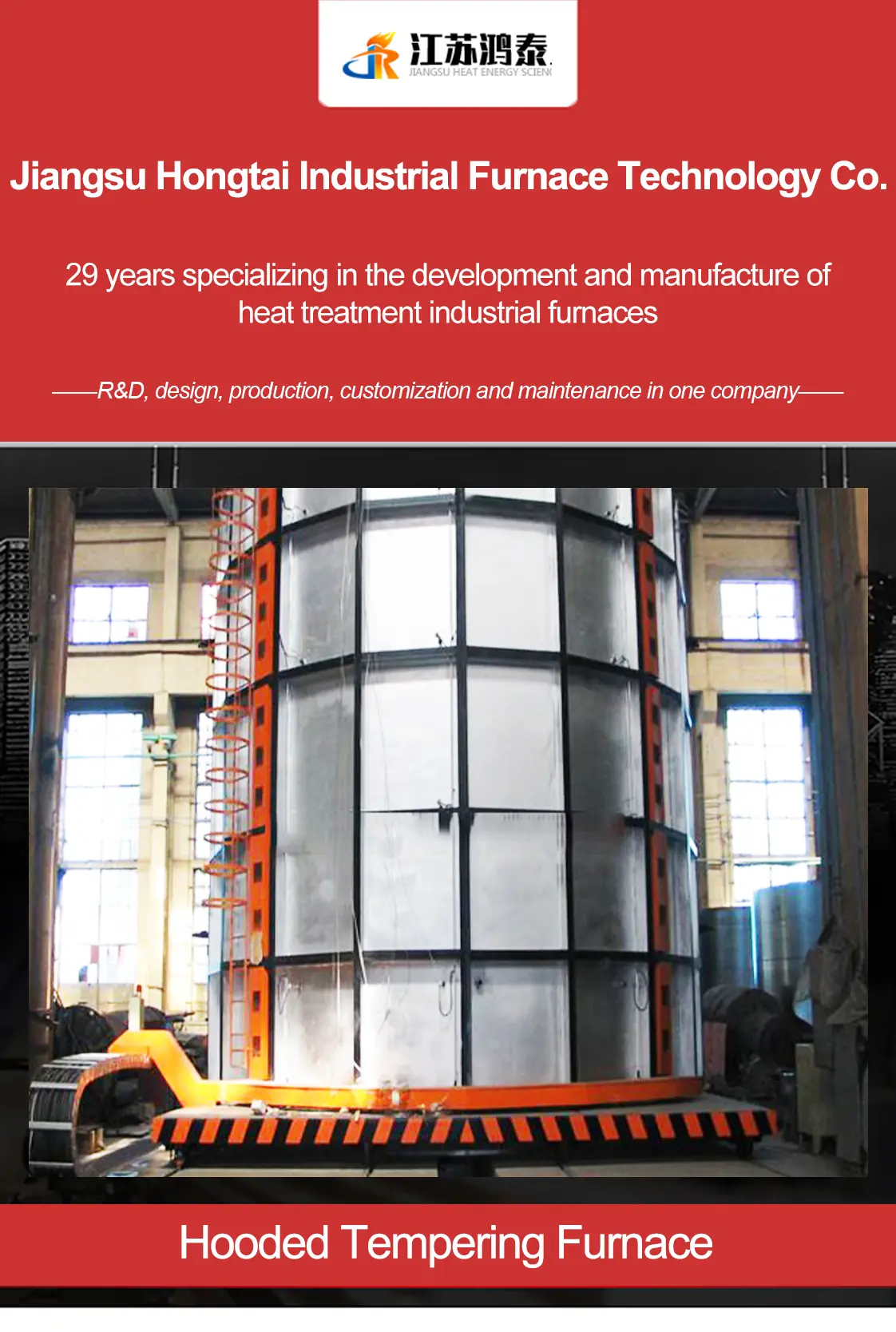
Industrial Value and Application Products
- Springs: Automotive, industrial, and consumer springs requiring high elasticity and fatigue resistance.
- Tools and Dies: Cutting tools, punches, and molds that need to withstand impact and wear without fracturing.
- Automotive Components: Suspension parts, engine components, and chassis elements that require a balance of strength and toughness.
- Construction Equipment Parts: Components for excavators, cranes, and other heavy machinery that experience significant stress.
- Fasteners: High-strength bolts and nuts used in critical applications.
Advantages:
1, the use of all-fiber furnace-like structure, with excellent energy-saving performance, than the same specifications of the brick resistance furnace energy-saving 30%, warming speed increased by 1 times;
2、The furnace body is light and compact through the workshop traveling crane mechanism can be light to move away from the furnace body, revealing the platform for loading and unloading materials.
3, using the top traveling crane to move away from the upper hood body, easy equipment maintenance and repair, improve furnace life.
4、Hooded electric furnace can be used alternately with one hood and several furnace bases, which improves productivity and saves investment.
The hooded electric furnace can be used alternately with multiple furnace bases in one hood to improve productivity and save investment.
Control: manual/automatic control of the temperature of the electric furnace.
Hood type tempering furnace is mainly used for heat treatment quenching fire, annealing and tempering of large alloy steel machine parts such as metal machine parts, flanges, rings, wind power flanges, slewing bearings, valves, bearings, wheels and other large alloy steel machine parts.
